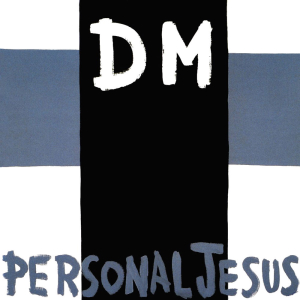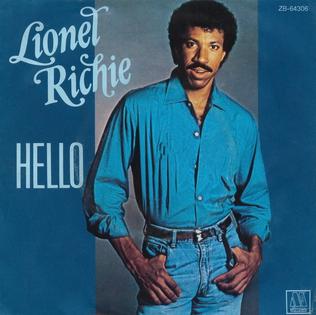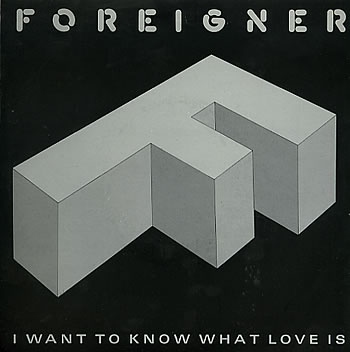 Few songs have the power to instantly transform the mood of a room quite like “Hot Hot Hot” by Buster Poindexter. Released in 1987, this vibrant and irresistibly catchy tune is a quintessential party anthem, conjuring images of tropical beaches, lively dance floors, and jubilant celebrations. Its infectious rhythm, jubilant chorus, and exuberant spirit have secured its place in pop culture as a go-to soundtrack for moments of fun and festivity. Yet, behind its seemingly carefree facade lies an intriguing history and a unique blend of musical influences that make “Hot Hot Hot” a fascinating study in how a simple song can transcend genres, generations, and borders to become a global sensation.
Few songs have the power to instantly transform the mood of a room quite like “Hot Hot Hot” by Buster Poindexter. Released in 1987, this vibrant and irresistibly catchy tune is a quintessential party anthem, conjuring images of tropical beaches, lively dance floors, and jubilant celebrations. Its infectious rhythm, jubilant chorus, and exuberant spirit have secured its place in pop culture as a go-to soundtrack for moments of fun and festivity. Yet, behind its seemingly carefree facade lies an intriguing history and a unique blend of musical influences that make “Hot Hot Hot” a fascinating study in how a simple song can transcend genres, generations, and borders to become a global sensation.
The story of “Hot Hot Hot” actually begins well before Buster Poindexter, the alter ego of singer David Johansen, put his distinctive stamp on it. The song was originally written and recorded by Montserratian calypso artist Arrow (born Alphonsus Cassell) in 1982. Arrow’s version was a straightforward calypso tune with an upbeat tempo and vibrant Caribbean flair, reflecting the infectious energy and playful spirit characteristic of the genre. The original “Hot Hot Hot” quickly became a hit in the Caribbean and among calypso enthusiasts worldwide, celebrated for its irresistible groove and catchy hook.
David Johansen, known as the charismatic frontman of the seminal punk and proto-punk band the New York Dolls, reinvented himself in the mid-1980s under the pseudonym Buster Poindexter. This persona was a mix of lounge singer, lounge lizard, and party host—an alter ego through which Johansen could explore more playful and theatrical musical styles, including jump blues, swing, and calypso. The Buster Poindexter project gave Johansen a fresh outlet, enabling him to embrace a campy, larger-than-life persona quite different from his glam-punk origins.
In 1987, Buster Poindexter released his debut album Buster Poindexter, which featured a cover of Arrow’s “Hot Hot Hot.” Poindexter’s version took the calypso roots of the original and blended them with an exuberant, party-ready arrangement that drew from New Orleans-style R&B, Caribbean rhythms, and swing. The result was a track that felt both retro and contemporary, sophisticated and accessible—a perfect dance-floor filler with broad appeal. The addition of vibrant horns, a bouncing bassline, and punchy percussion elevated the song’s already celebratory vibe.
From the opening notes, “Hot Hot Hot” commands attention. The chorus, simple and repetitive—“Feeling hot hot hot”—is instantly memorable, inviting listeners to join in the fun. Buster Poindexter’s playful vocal delivery, full of winks and theatrical flourishes, adds a layer of humor and charm. It’s a song that doesn’t take itself too seriously but succeeds precisely because of that carefree attitude. The energy is contagious, a musical embodiment of the party spirit that the lyrics evoke.
“Hot Hot Hot” by Buster Poindexter quickly became a favorite at clubs, parties, and sporting events. Its upbeat tempo and call-and-response structure made it perfect for group sing-alongs and dance circles. It found particular popularity in the United States during the late 1980s and early 1990s, becoming a staple of summer playlists and festive gatherings. The song’s appeal was broad, cutting across age groups and musical tastes.
The music video for “Hot Hot Hot” further reinforced the song’s celebratory vibe. Featuring colorful costumes, energetic dancing, and whimsical scenes reminiscent of a tropical carnival, the video captured the exuberance of the track and helped cement its status as a party classic. Poindexter’s charismatic presence and the band’s infectious enthusiasm made it clear that this was a song designed for fun above all else.
Beyond the United States, “Hot Hot Hot” also achieved international success. It charted in the UK and across Europe, becoming a summer hit that transcended language and cultural barriers. Its upbeat rhythm and simple, joyful lyrics made it a universal anthem for celebration. The song has since been featured in movies, commercials, and television shows, further embedding it into popular culture.
One of the most remarkable aspects of “Hot Hot Hot” is how it embodies the spirit of musical fusion. At its heart, it’s a calypso song, a genre that originated in Trinidad and Tobago and is known for its rhythmic complexity, melodic inventiveness, and storytelling tradition. Calypso music often carries political or social commentary, wrapped in upbeat and danceable tunes. While “Hot Hot Hot” is more of a straightforward party song than a political statement, it still carries the infectious rhythmic patterns and lively brass instrumentation typical of calypso.
Buster Poindexter’s version also incorporates elements of New Orleans R&B and swing, genres with deep roots in African American musical traditions. The vibrant horn section and syncopated rhythms evoke the sounds of Mardi Gras parades and jazz funerals, tying the song to a rich heritage of celebration and community. This blending of Caribbean and American musical styles makes “Hot Hot Hot” a unique and compelling example of cross-cultural musical exchange.
David Johansen’s transformation into Buster Poindexter and his embrace of “Hot Hot Hot” also reflect a broader trend of artists exploring new genres and personas to expand their creative horizons. Johansen’s willingness to step outside of his punk rock roots and adopt a persona that revels in humor, camp, and old-school showmanship was both bold and successful. It allowed him to reach new audiences and demonstrate his versatility as an artist.
“Hot Hot Hot” also enjoys enduring popularity due to its association with celebration and festivity. It’s a song that has become a fixture at weddings, barbecues, and sporting events, a sonic cue for good times. Its simple, repetitive chorus invites participation, making it an ideal song for crowd engagement. Whether played by a live band or blasted over speakers, it encourages movement, dancing, and communal joy.
The song’s legacy extends beyond just entertainment. It’s a testament to the power of music to bring people together across cultural and geographic divides. From the Caribbean to New York City to the global stage, “Hot Hot Hot” has served as a soundtrack for joy, embodying the universal human desire to celebrate life. Its success also highlights how music rooted in specific cultural traditions can be reinterpreted and embraced worldwide without losing its core spirit.
Over the years, “Hot Hot Hot” has been covered and sampled by various artists, further demonstrating its broad influence. Its catchy melody and rhythm make it an attractive source material for remixing and reinterpretation. The song’s continued presence in popular culture, from film soundtracks to sporting arenas, underscores its status as a timeless party anthem.
Interestingly, “Hot Hot Hot” also represents a joyful counterpoint to the often serious and introspective music that dominated the late 1980s music scene. While many artists of the time explored complex social issues or personal struggles, Buster Poindexter’s “Hot Hot Hot” offered listeners a chance to let loose and revel in simple pleasures. Its unabashed celebration of fun and festivity was a refreshing change of pace.
The success of “Hot Hot Hot” also reflects the power of persona in music. Buster Poindexter’s theatrical presentation and charismatic performance brought a sense of humor and showmanship that elevated the song beyond just a catchy tune. His persona as a debonair party host invited audiences to join the fun, making the experience more immersive and enjoyable.
In conclusion, “Hot Hot Hot” by Buster Poindexter is much more than a catchy party song. It is a cultural phenomenon that blends calypso roots with American musical traditions, creating a vibrant, infectious anthem that has delighted listeners for decades. Its enduring popularity is a testament to its universal appeal and its ability to capture the joyous spirit of celebration. Whether heard at a summer barbecue, a sporting event, or a tropical festival, “Hot Hot Hot” continues to invite people around the world to dance, sing, and feel the heat of pure, unadulterated fun.


